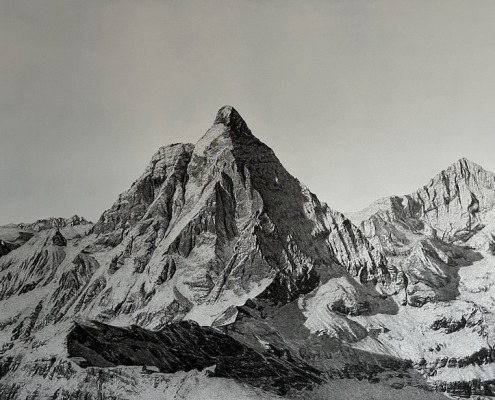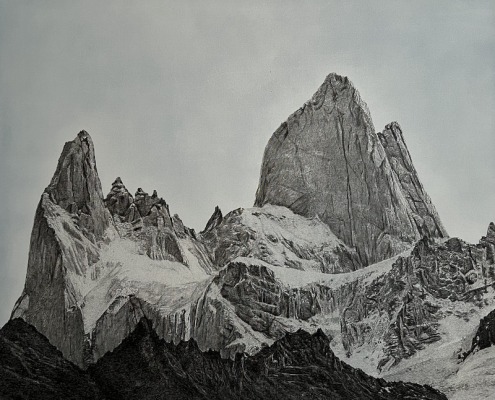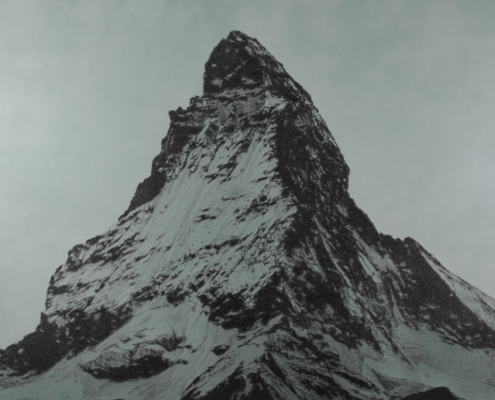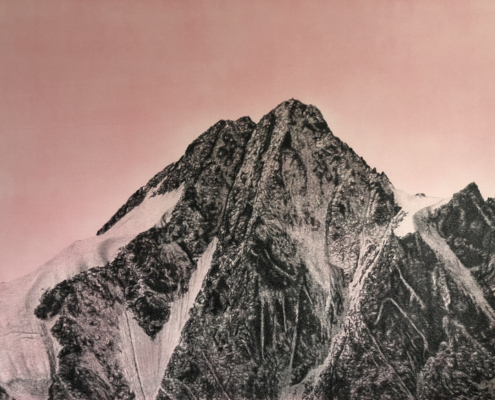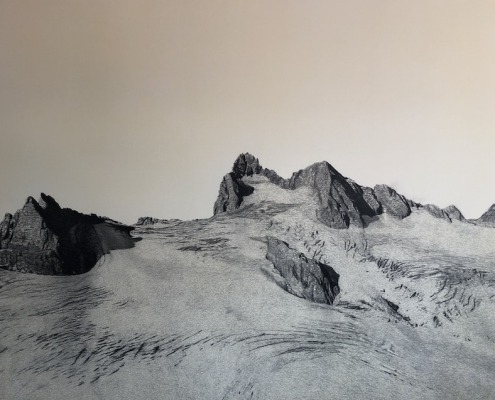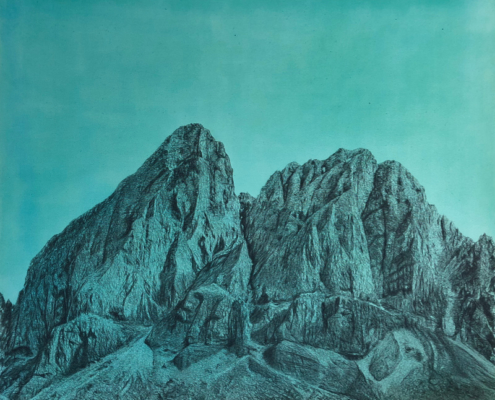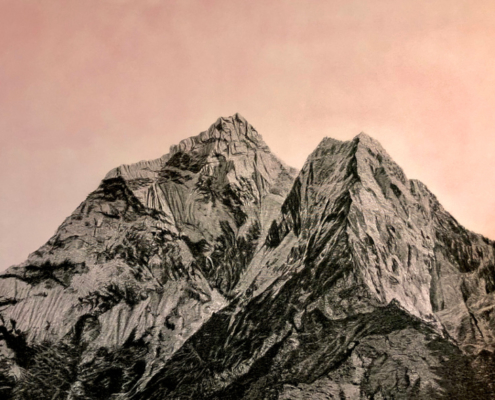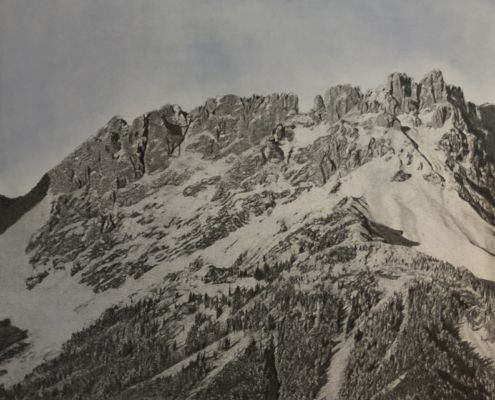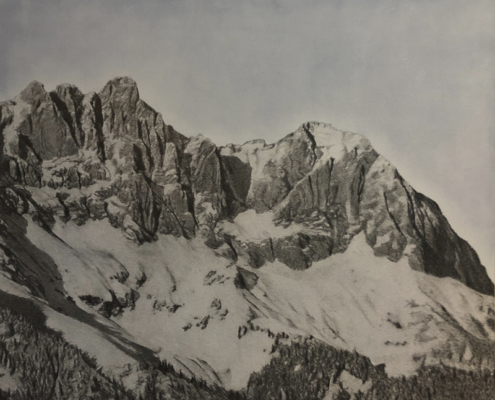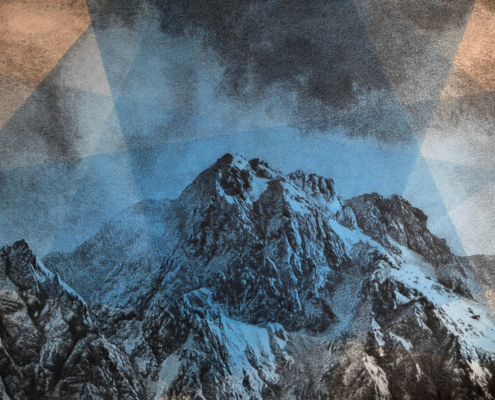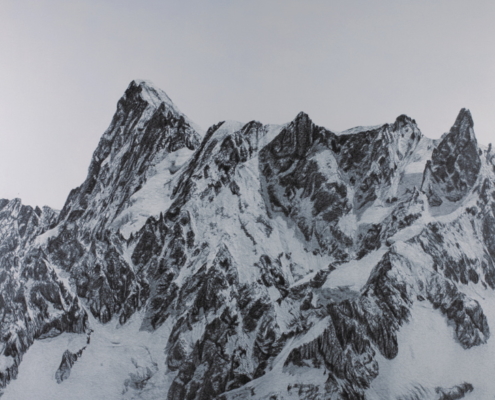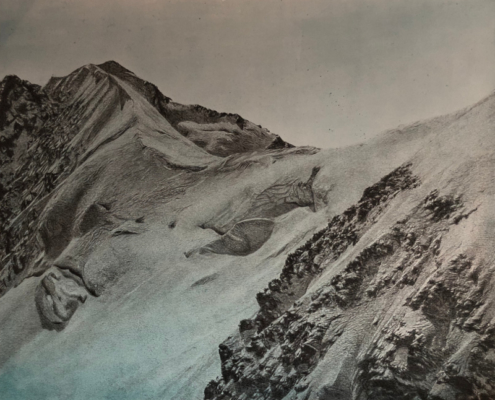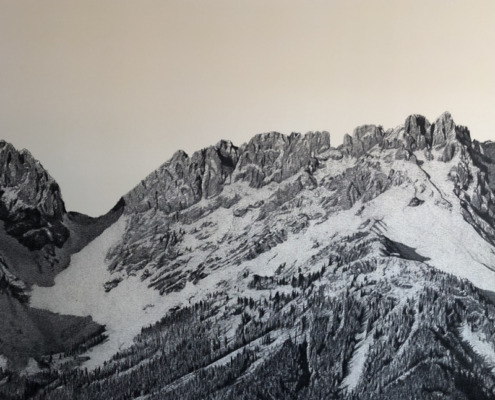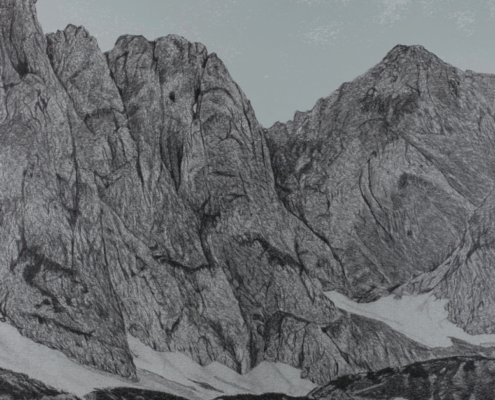Mountains – Climate change indicators
In 2018, a message received a lot of attention, which was first perceived by many as a fake news, but then was not further noticed. The ascent to the most famous Swiss mountain, the Matterhorn, was to be banned in future. Glaciologists had found out after constantly increasing deaths by rockfall on the Matterhorn that the mountain slowly began to crumble from its summit due to the ever faster disappearance of permafrost at altitudes above 2,200 m above sea level. Large quarries, rockfalls and scree avalanches are the result of the fact that the permanently frozen regions in the high mountains slowly thaw out and the putty of the mountains disappears faster and faster.
In addition to the mountains, which are in danger of falling victim to climate change, it is the glaciers in particular that have been retreating more and more dramatically as a result of massive global warming since the beginning of the industrial age. When glaciers thaw, not only does the landscape change, but the biodiversity of the Alpine region dwindles as well. Former glacial valleys degenerate into desolate scree deserts, the habitat for many animals and plants is lost forever. The desiccating soil defends itself with mountain passes and landslides. The entire geological structure is lost, with all the devastating consequences that this entails.
In the entire Alpine region, the melting of the glaciers threatens to lead to a sustained shortage of water, as more than three quarters of the world’s freshwater reserves consist of ice from the polar regions and glacial regions. By 2050, according to a not unrealistic estimate by experts, significantly more than half of all glaciers will have disappeared, even if we immediately take drastic global measures to delay global warming.
The glaciers are, so to speak, the clinical thermometers of the world’s climate, the mountains are towering stone admonisher, to reflect before it is too late for all sensible measures.
The painter Christoph Palaschke has set himself the goal of using his picture series “Mountains – Indicators of Climate Change” to impressively draw attention to the devastating man-made climatic changes and the geological changes that follow them, thus contributing to raising awareness for an urgently needed trend reversal. The exponential population growth and economic growth, but also the modern lifestyle of our globalised consumer society of recent decades, is increasingly leading us into a catastrophe. Arnold Schwarzenegger, who is working hard to counter climate change, has summarised the problem in a single sentence when he says: “It is time to wake up and talk about what is really important”.
“Matterhorn”
Acrylic and charcoal on canvas
145 cm x 195 cm, 2022
“Fitz Roy / Patagonien”
Acrylic and charcoal on canvas
145 cm x 175 cm, 2021
“Matterhorn”
Acrylic and charcoal on canvas
145 cm x 195 cm, 2019
“Großglockner”
Acrylic and charcoal on canvas
145 cm x 195 cm, 2019
“Dachstein”
Acrylic and charcoal on canvas
145 cm x 175 cm, 2021
“Peitlerkofel – Würzjoch”
Acrylic and charcoal on canvas
145 cm x 175 cm, 2019
“Ama Dablam – Nepal”
Acrylic and charcoal on canvas
145 cm x 195 cm, 2020
“Wilder Kaiser – Regalm”
Acrylic and charcoal on canvas
145 cm x 175 cm, 2020
“Wilder Kaiser – Ackerlspitze”
Acrylic and charcoal on canvas
145 cm x 175 cm, 2020
“Selenitza -Karawanks”
Acrylic and charcoal on canvas
150 cm x 200 cm, 2018
“Mont Blanc”
Acrylic and charcoal on canvas
145 cm x 195 cm, 2020
“Castor Glacier – Pennine Alps”
Acrylic and charcoal on canvas
145 cm x 175 cm, 2019
“Ellmauer Tor”
Acrylic and charcoal on canvas
145 cm x 175 cm, 2021
“Waxensteiner Turm”
Acrylic and charcoal on canvas
115 cm x 145 cm, 2019

